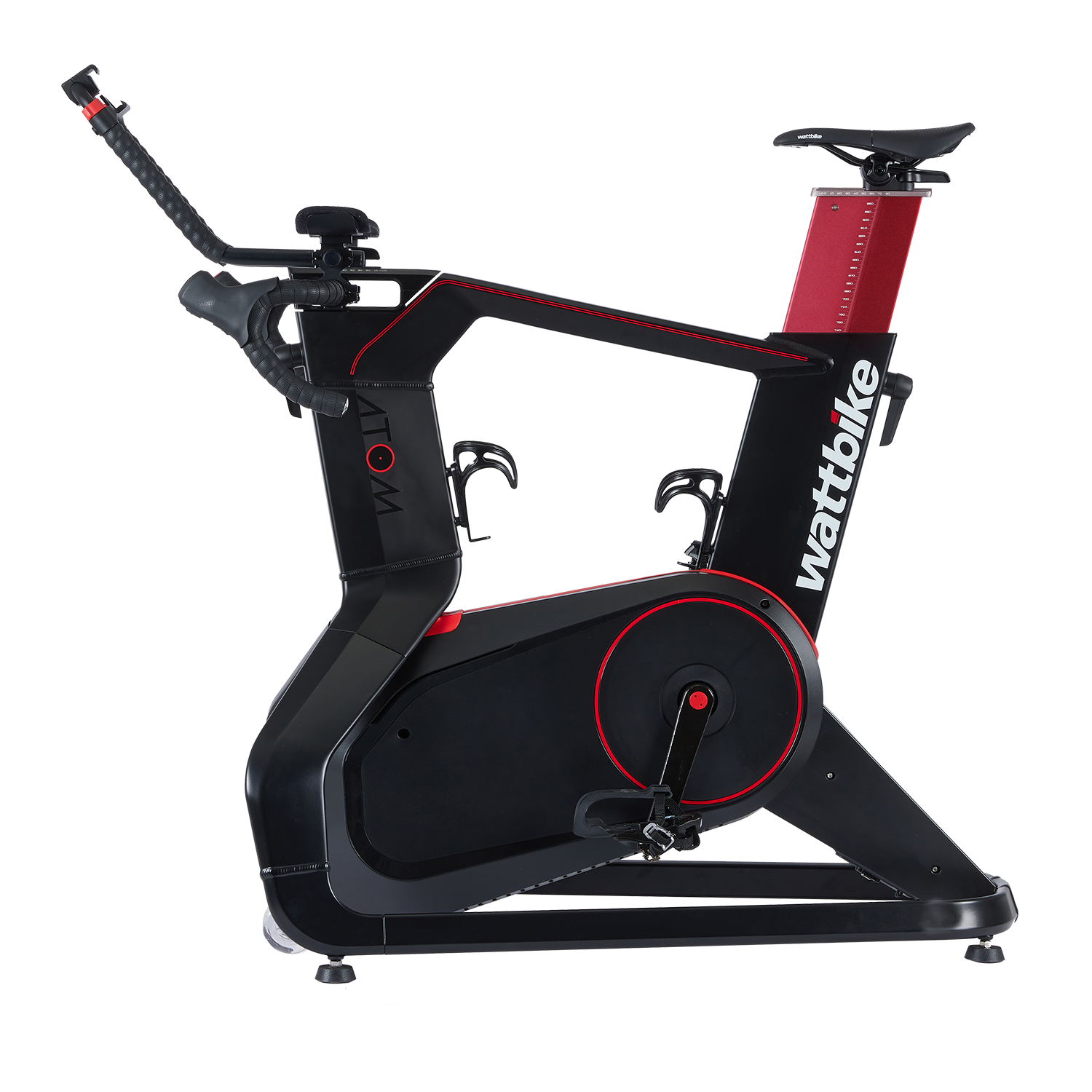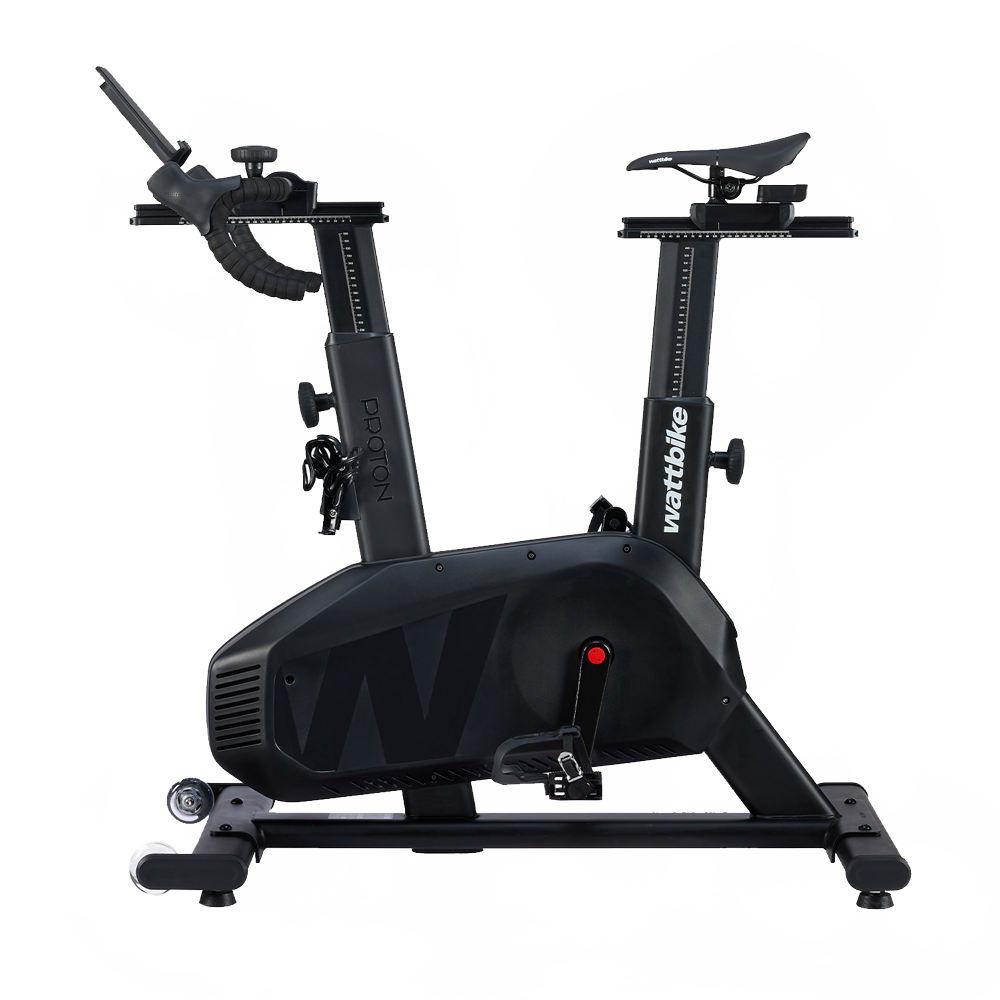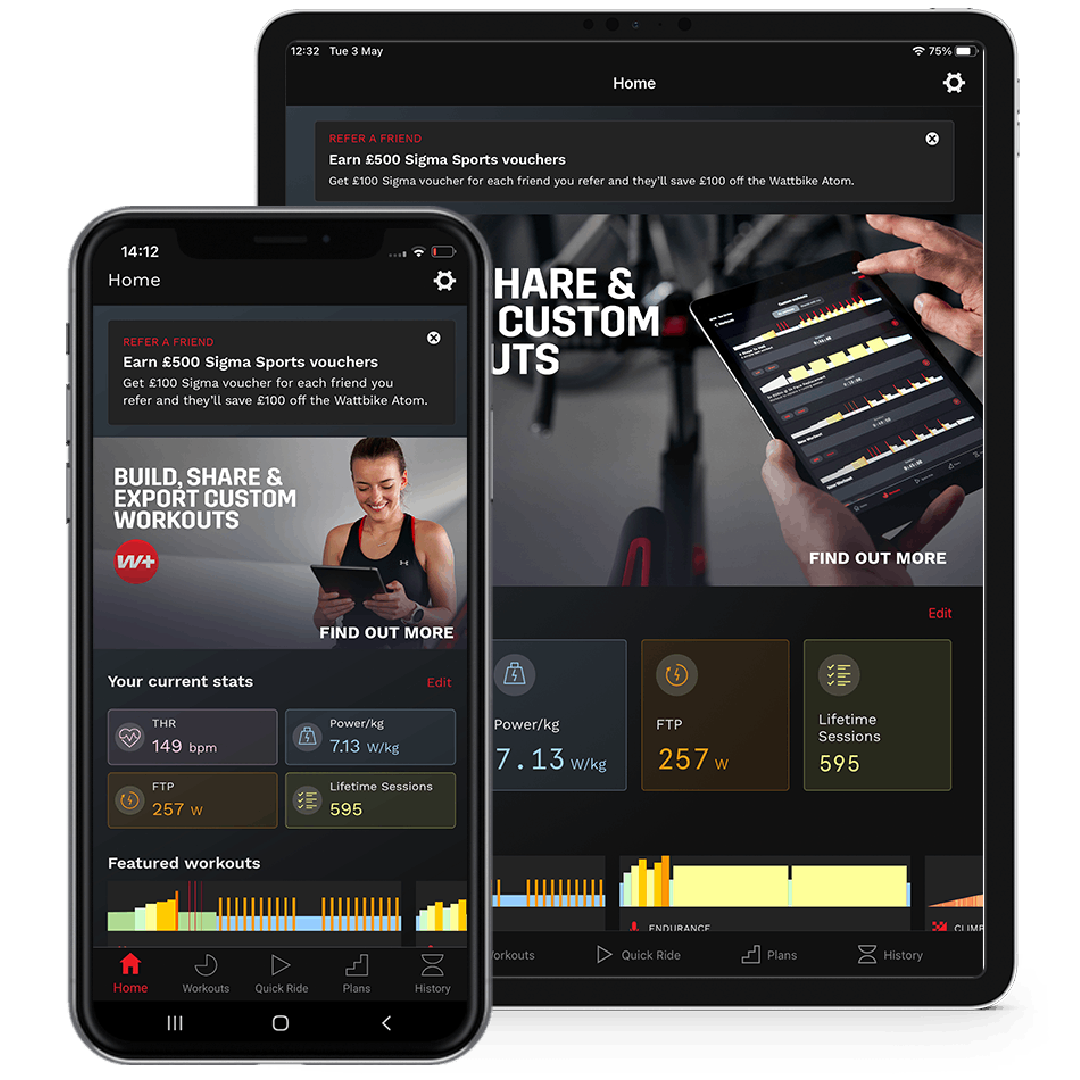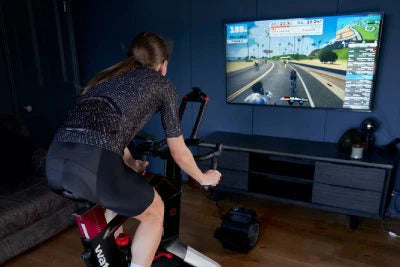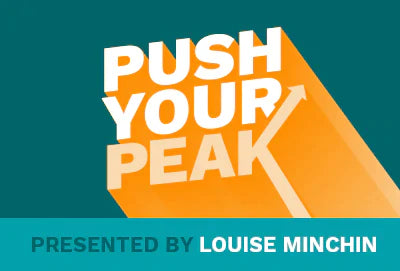Your Cart is Empty
SHOP
TRAINING & APPS
SUPPORT
news & information
Heart Rate & Cycling
November 08, 2021 4 min read
Heart rate can be a divisive subject amongst cyclists, mainly due to how technical and scientific it can get. We debunk a few myths around heart rate and cycling and give you a digestible explanation for the things that matter most to you, like how to determine your max heart rate when cycling and how cycling affects your heart rate.

How to Determine Max Heart Rate Cycling
Most athletes, both amateur and professional, will need to know at some point what their max heart rate should be when cycling. It’s a useful metric and can help you to know when to push harder and when to ease off the gas.
One of the most common ways to determine max heart rate is the simple formula: 220 minus your age. This is a great way to find a general benchmark, and if you’re a weekend warrior who enjoys time on an smart indoor trainer a few times a week with a club ride thrown in at the weekend, this will suit you just fine.
However, a lot of coaches, athletes and cycling professionals disregard this equation for being too simplistic, and we can’t really blame them. This equation assumes that everyone of a certain age will have the same maximum heart rate, which simply isn’t true. Factors that can affect your maximum heart rate include current fitness level, stress level, genetics, and even the temperature.

You can determine your max heart rate on the Wattbike Hub app, by completing a performance test. Once completed, the Wattbike Hub will automatically update your profile to adapt workouts to your ability.
Performance Tests to Determine Max Heart Rate
The Health Assessment Submax Test
This will estimate your Maximum Minute Power (MMP) and Maximum Heart Rate (MHR) and give you an age and gender-related fitness score. You can use this information to set personalised training zones, give structure to your training and inform your fitness compared to your age grouping.
Suitable for:Anyone, particularly those who are new to their fitness and performance journey.
Max Ramp Test
This is the ‘gold standard’ test designed to find and record your MMP and MHR. The test increases the target wattage in set increments every minute until failure.
Suitable for: Those with a high or exceptional level of fitness. The test should not be attempted if you are a beginner or have been recently ill or injured.
While it’s true that your maximum heart rate does decrease with age, this doesn’t have to be a bad thing and certainly doesn’t mean you’ll automatically lose your fitness over the years. What’s important is how long you can sustain an effort at MHR (maximum heart rate). This is something you can train for, but even experienced professional athletes will only be able to maintain MHR for a few minutes. Don’t worry - if you try to stay at MHR for too long your heart won’t explode or any other crazy myth you may have heard. Your body will simply slow you down as a form of self-preservation.
Heart Rate Zones Explained
One of the main reasons for calculating your maximum heart rate (MHR) is so that you can then identify your five heart rate training zones. Knowing which heart rate zone you’re training in is vital so that you can know how hard to push and make sure each training session is as valuable as it can be.
As with the calculation for maximum heart rate, you can get very technical and specific with heart rate zones, but unless you’re a professional competitive athlete, this really isn’t necessary, so we’ll keep it nice and simple here. Once you’ve worked out your MHR, you can use the table below to calculate your five heart rate zones. This table is specific to cycling and may vary to heart rate zones you see for activities like running or swimming.
| Heart Rate Zone | % of MHR | Perceived Effort | How It Feels |
| Zone 1 | 60-65 | Easy | You can easily hold a conversation |
| Zone 2 | 65-75 | Steady | You feel like you could do this all day |
| Zone 3 | 75-82 | Brisk | You start to break a sweat |
| Zone 4 | 82-89 | Hard | You start to feel the burn |
| Zone 5 | 89-100 | Maximum | You are giving it your all |
How to Keep Heart Rate Low Whilst Cycling
Cycling is different from running and swimming in that there’s the external element of the bike to consider. For this reason, the way cycling affects your heart rate is different when compared with running or swimming. Because of the assistance of the bike against forces like gravity, your maximum heart rate will be lower when cycling than when running or swimming.
In general, a lower, slower heart rate is an indication of a higher level of fitness. As we all know, the heart is a muscle, and like all muscles the more you train it the stronger and more efficient it becomes. The heart of someone with a lower heart rate will be pumping more blood in one beat, which means the heart can beat less frequently resulting in the lower heart rate.
In order to train your way to a lower heart rate, you’ll need patience and dedication, as it is a long-term process and not something you can achieve overnight. You’ll need to train your cardiovascular system to become more powerful and ramp up your endurance. Eventually, you’ll be able to cycle for longer at a lower heart rate.
Two things that will really get your heart pumping while cycling are sprint intervals and hill repeats. If you want to keep your heart rate low whilst cycling, opt for longer, smoother rides with fewer gradients.
Also in Performance

Why Wattbike is the Secret Weapon for Stars - On and Off the Court
June 17, 2025 2 min read
As the NBA® Finals captivate fans around the world, there's one training tool in every NBA training facility that they rely on - the Wattbike.
Trusted across elite sports, Wattbike has become a staple in NBA training facilities, from pre-season conditioning, power benchmarking and testing, to in-season recovery.

Beat the Heat: Understanding Sweat Rate and Optimising Hydration for Summer Training
June 10, 2025 3 min read
As summer temperatures rise, so does the challenge of training and trying to maintain optimal performance. With the heat, sweat loss can lead to dehydration, reduced endurance, and impaired recovery.
Understanding your sweat rate and implementing effective hydration strategies can be a simple way to help you gain the edge in your training.

Wattbike X UA Next
October 18, 2024 2 min read
The Under Armour Next Academy at Battersea Power Station offers a comprehensive testing facility designed to push athletes to their limits through a series of six athletic tests, each targeting different aspects of fitness.
This facility focuses on empowering and testing the next generation of athletes through a series of assessments, including those on the Wattbike, which is used to measure key cycling metrics, such as power output, endurance, and fitness levels.
Sign up to get the latest
Be the first to hear about Wattbike news, offers and more.



